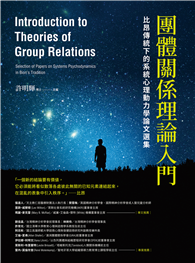Recount the life of Canadian pilot William Henry Nelson, his heroic WWII exploits, and the enduring impact on his wife and son.
Battle of Britain Spitfire Ace is the story of a young Canadian who in a short time, and for a brief time, mastered Britain’s most legendary war machine, the Spitfire. It is also the story of a young English woman who was for a short time his wife, and for a long time his widow, and of their son who for much of his life knew little about his father and is still learning about him. Their stories, based on their letters, diaries, and photos, unfold in richly detailed context as the setting moves from Montreal in Nelson’s youth, England in the last years of peace, the first (and largely forgotten) months of the air war against Nazi Germany, Canada during the war, and finally to post-war England.
William Henry Nelson was a first-generation Canadian Jew whose family name was originally Katznelson. Like many young Canadians in the 1930s, he wanted to fly. Nelson began work in Montreal’s aircraft industry, but in 1936, at the age of nineteen, he left a humdrum life on the ground to go to England, intent on becoming a pilot in the Royal Air Force. A year later he was posted to a bomber squadron. Willie (as his family and friends called him) was also a fine athlete. He was captain of his squadron’s team in Britain’s Modern Pentathlon competitions in 1938 and 1939. While stationed in Yorkshire, he met Marjorie McIntyre. Instantly smitten, they married days before the war began.
Nelson was one of the first Canadians to fly in combat over Germany, only days after the war began. The award of a Distinguished Flying Cross a few months later made him an instant hero to the Jewish community across Canada. In Britain’s desperate situation in June 1940 Nelson volunteered to retrain as a fighter pilot. Within weeks he destroyed five enemy aircraft, so becoming the only Canadian Spitfire ace in the Battle of Britain. Few fought as both bomber and fighter pilot during the Second World War, even fewer managed to excel at both. Willie Nelson was shot down on the first day of November, 1940, near the English Channel. He never saw his adversary, who may have been one of Nazi Germany’s most decorated fighter pilots. Nelson was 23 years old, and by then the father of a two-month old boy, William Harle Nelson.
Marjorie took her infant son to Canada in 1941, seeking to meet her late husband’s family and provide little Bill the opportunity for a better life. She was one of the first war brides to do so. Marjorie was unprepared for the gulf in culture and class with Willie’s mother, and she was shocked by the antisemitism she encountered in Montreal. She left the city after a few months to begin her life anew, alone in a strange country. Marjorie soon remarried a Canadian, Ted McAlister. In 1957 they moved to England where Bill, having taken his stepfather’s surname, would become a prominent figure in Britain’s cultural life. Only in his thirties, however, would Bill come to learn of the family and origins of the father he never knew.
On the 80th anniversary of the Battle of Britain, the Royal Air Force Museum in London featured Nelson in its exhibit about the ’hidden heroes, ’ the Jews who volunteered to fight in the RAF in the Second World War. Nelson had said little about his Jewish identity, though it was consequential to him and to others during his life and afterwards. Over the course of his four years in England, Willie Nelson refashioned himself. But who had he become? Who was the man behind the iconic portrayals, what had been his formative influences and his guiding lights? How did he come to do what he did and what, in those last few years in England, did he live and die for?
| FindBook |
有 1 項符合
Battle of Britain Spitfire Ace: The Life and Loss of One of the Few, Flight Lieutenant William Henry Nelson Dfc的圖書 |
 |
Battle of Britain Spitfire Ace: The Life and Loss of One of the Few, Flight Lieutenant William Henry Nelson Dfc 作者:Usher 出版社:Air World 出版日期:2024-08-13 語言:英文 規格:精裝 / 256頁 / 普通級/ 初版 |
| 圖書館借閱 |
| 國家圖書館 | 全國圖書書目資訊網 | 國立公共資訊圖書館 | 電子書服務平台 | MetaCat 跨館整合查詢 |
| 臺北市立圖書館 | 新北市立圖書館 | 基隆市公共圖書館 | 桃園市立圖書館 | 新竹縣公共圖書館 |
| 苗栗縣立圖書館 | 臺中市立圖書館 | 彰化縣公共圖書館 | 南投縣文化局 | 雲林縣公共圖書館 |
| 嘉義縣圖書館 | 臺南市立圖書館 | 高雄市立圖書館 | 屏東縣公共圖書館 | 宜蘭縣公共圖書館 |
| 花蓮縣文化局 | 臺東縣文化處 |
|
|
圖書介紹 - 資料來源:博客來 評分:
圖書名稱:Battle of Britain Spitfire Ace: The Life and Loss of One of the Few, Flight Lieutenant William Henry Nelson Dfc
內容簡介
|











